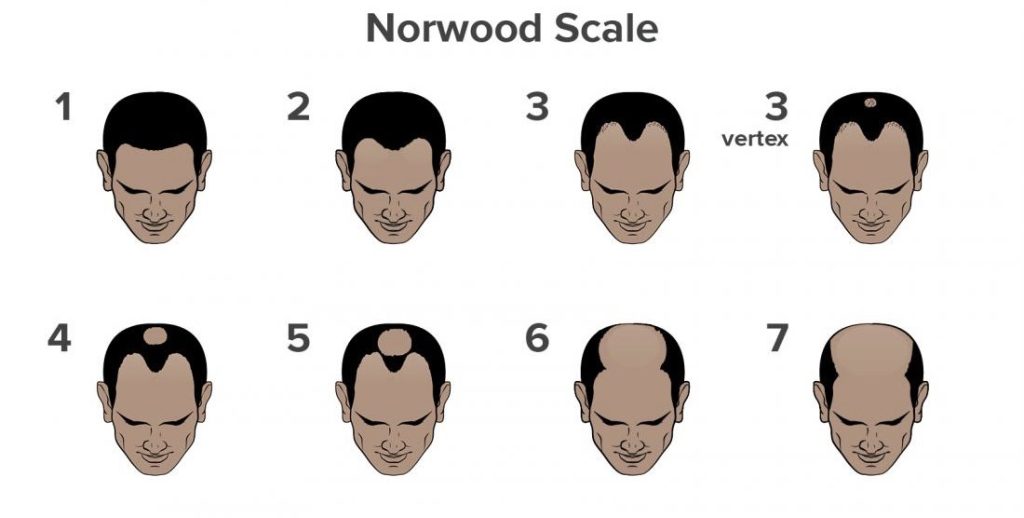Hair Transplants for Men
Hair Transplant for Men
Male pattern baldness, also known as androgenetic alopecia, is the most common type of hair loss in men. It affects around 50% of men over the age of 50, but it can also begin to appear as early as the teenage years.
Male pattern baldness is characterized by a predictable pattern of hair loss that typically begins at the temples and crown of the head, and then progresses to create a horseshoe-shaped pattern of hair around the sides and back of the head. In some cases, it can eventually lead to complete baldness.
The condition is caused by a combination of genetic and hormonal factors. It occurs when hair follicles on the scalp become sensitive to a hormone called dihydrotestosterone (DHT). DHT is a derivative of testosterone, and it causes the hair follicles to shrink and produce thinner, weaker hair. Over time, the hair follicles can become so small that they stop producing hair altogether.
There are a number of factors that can influence the severity of male pattern baldness, including age, genetics, and overall health. Men who smoke or have poor nutrition may be more likely to experience hair loss, as can those who have high levels of stress.
Hair loss is a common problem among men, and it can significantly impact their self-esteem and confidence. Fortunately, hair transplant surgery has emerged as a viable solution to restore men’s hair and their self-confidence. Hair transplant is a surgical procedure that involves the transplantation of hair follicles from one part of the body (usually the back of the head) to the balding area.
The first step in a hair transplant is a consultation with a qualified hair restoration surgeon. During the consultation, the surgeon will evaluate the patient’s hair loss pattern, hair thickness, and scalp laxity. They will also discuss the patient’s goals and expectations for the surgery. Based on this evaluation, the surgeon will recommend the best approach to achieve the desired results.
After the surgery, the transplanted hair follicles will initially fall out, but new hair growth will begin within a few months. It takes several months for the hair to grow to its full thickness, and the patient will need to be patient and follow the surgeon’s instructions for post-operative care. Once the new hair has grown, it can be cut, styled, and treated just like the patient’s natural hair.
Hair transplant surgery can restore a man’s hair and, in turn, restore their confidence. For many men, hair loss can be a significant source of anxiety and low self-esteem. By restoring their hair, hair transplant surgery can boost their confidence, improve their self-image, and help them feel more comfortable and attractive in social situations.
Moreover, hair transplant surgery is a long-term solution for hair loss. Unlike temporary hair loss treatments such as wigs or hairpieces, hair transplant surgery is a permanent solution. Once the transplanted hair has grown, it will continue to grow and can last a lifetime with proper care.
Overall, hair transplant surgery is an effective and safe solution for men who are experiencing hair loss. It can restore their hair, boost their confidence, and help them feel more comfortable and attractive. With the right surgeon and post-operative care, a hair transplant can provide a permanent solution to hair loss and help men reclaim their self-confidence.
There are two main types of hair transplant surgeries: Follicular Unit Excision (FUE) and Follicular Unit Transplantation (FUT). Both FUE and FUT are effective ways to restore hair loss, but they differ in the method of extracting the hair follicles.

